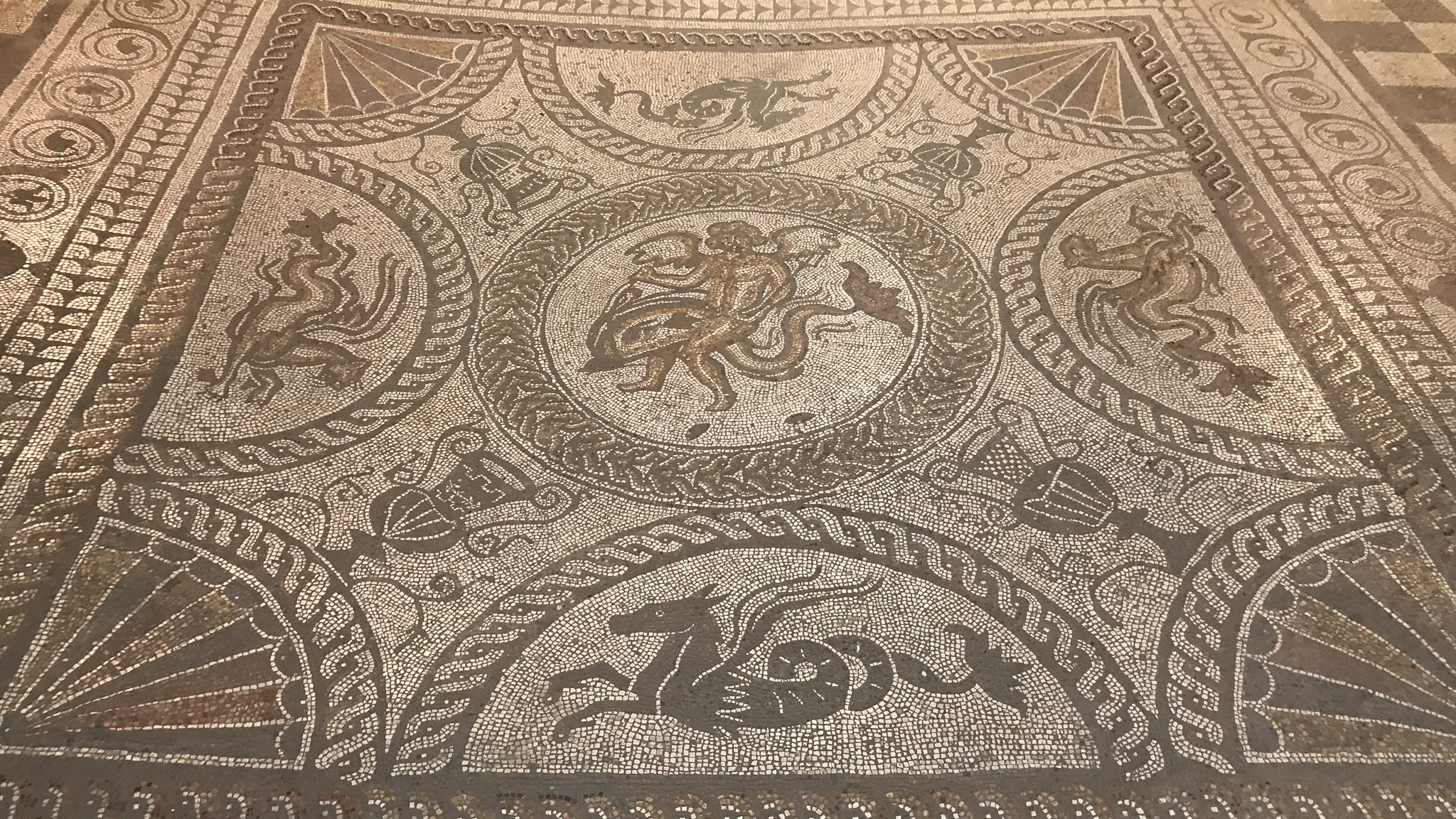

Fishbourne Roman Palace is a museum built over-top of uncovered and preserved Roman mosaic floors from 75 AD. The site is still actively digging for more artifacts but is taking its time. Stuff is safe while its still in the ground. Their collection is mainly archaeological finds from the Roman era.
Our visit to Fishbourne Palace was a little less structured than some other visits but I liked that we got to be flexible with discussion topics. We met with 3 staff members in one of the education class rooms and mainly talked about how they use and store their collection. The collection is made up of 300,000 objects and most of it's for research and sometimes loans.
From our visit it looked like the institution focuses a lot on kids education. The staff lets school groups handle real artifacts knowing full well they'll be man-handled and destroyed. They send things out to handling knowing they don't come back to storage. "It's dead the second it goes out" was a quote from the staff! They've noticed though, that kids really respond to getting to touch the real thing. I liked getting to handle the objects too! They passed around a handaxe, a roman horse shoe, projectile points, and pottery pieces with ancient fingerprints in them.
They also send out objects for 'destructive sampling' which is research procedures that cause permanent damage to an object during testing. The staff explained that they send objects out for this more often than you'd think because they have so many duplicate objects; its better to destroy one to learn more about it and all the other things like it than to just keep them all safe.
After the talk we got to take a tour of their collection storage. Rob was pretty excited to show off the compact shelving and custom boxes for the collection. We got a run-down of their numbering and location systems too.
The museum itself is pretty rad. The first part was an exhibit built a few decades ago that is not only an exhibit of the site's history, but kind of exhibit design history as well.
The second part of the museum is the mosaic floors themselves. Walls and a roof were built around and over the discovered mosaic floors. Walkways were built over-top for visitors to get a good look at them without treading on them. Interpretive labels were placed along the walkways to tell visitors about the mosaics or type of room they belonged in. The cover photo of this post is the 'Cupid on a Dolphin' mosaic which would have been the floor for one of the main dining rooms of the palace.
We ended our visit by checking out the conservation and research lab for the museum.
Overall a really educational experience. I enjoyed learning about a collection that can be handled and used more freely.

Museum Professional. Traveler. Cat lover.